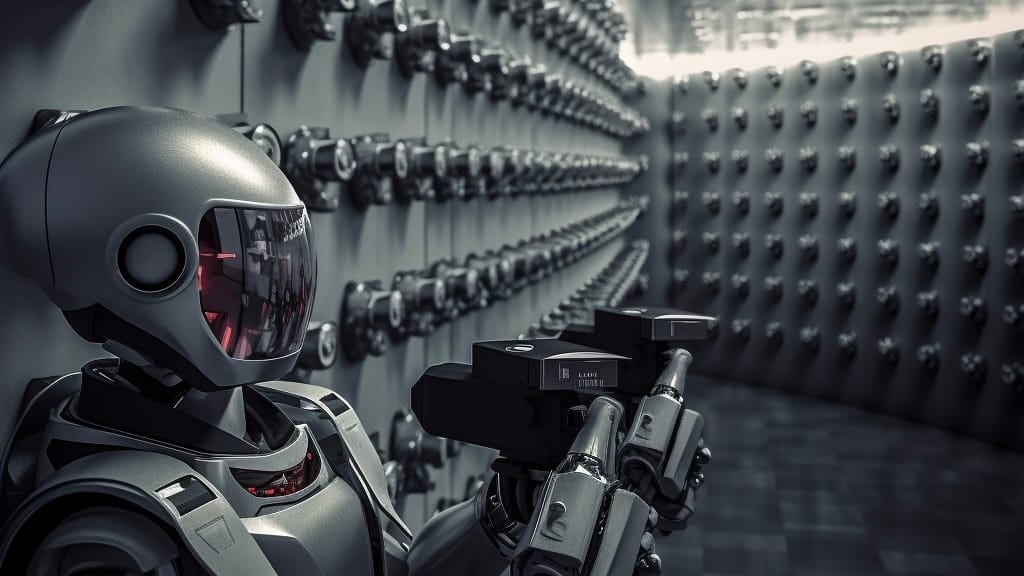- AI Tool Tracker
- Posts
- A New Chapter in Coding: Google's Project IDX Revealed
A New Chapter in Coding: Google's Project IDX Revealed

Here's what's happening in the world of AI
Set out on an exciting trip with the most current issue of our newsletter! This issue promises to stimulate your interest and inspire your imagination since it is jam-packed with the most latest information on cutting-edge technological and artificial intelligence advances. Prepare to go on a voyage into the future with us!
In today’s AI news
Google's IDX: Code Smarter, Not Harder
Task Force Lima: Pentagon’s New Guard
AI in Medicine: Crafting the Antibodies of Tomorrow
Revolution in a Chip: IBM Mimics the Human Mind
3 Trending Tools
Google's IDX: Code Smarter, Not Harder

Google launches Project IDX, revolutionizing the development landscape with an AI-driven environment. Supporting major frameworks and languages, it stands out as a promising innovation for developer productivity.
Key Highlights:
Google's Project IDX: An AI-enabled, browser-based development environment for full-stack web and multiplatform apps. Supports frameworks like Angular, Flutter, Next.js, React, Svelte, and Vue, along with JavaScript and Dart.
Key Features: Built upon Visual Studio Code and integrated with Google’s AI model Codey, IDX includes smart code completion, ChatGPT/Bard-like chatbot for assistance, contextual code actions, and more.
Innovative Prospects: Cloud-based integration with Google's Firebase Hosting and Google Cloud Functions, along with existing GitHub code compatibility, shows promise, setting IDX apart from competitors like GitHub's Copilot and Amazon's CodeWhisperer.
Project IDX exemplifies Google's innovative spirit in the coding universe, challenging conventional development methods. Will this herald a new era of AI-driven development?
Task Force Lima: Pentagon’s New Guard

Task Force Lima is the Pentagon's latest initiative to probe the use, benefits, and risks of generative AI like ChatGPT within the Defense Department, ensuring safety and efficiency.
Key Highlights:
Exploration of AI Potential: Task Force Lima aims to assess and synchronize generative AI across the Defense Department, exploring where it can be effective while limiting its dangers.
Leadership & Objectives: Led by Craig Martell, the chief digital officer, the task force is focusing on areas like document drafting and is cautious about contexts involving lethal weapons.
Guiding the Industry: One of the key goals is to guide the industry in creating products and services that align with Defense Department standards, considering challenges like context and hallucination mitigation.
The establishment of Task Force Lima underscores the Pentagon's balanced approach to embracing generative AI, considering both innovative applications and potential risks—a reflective step towards the future of defense technology.
AI in Medicine: Crafting the Antibodies of Tomorrow

AI and automation lead LabGenius in pioneering innovative medical antibodies, accelerating the discovery process, and enhancing treatment effectiveness, promising improved patient care.
Key Highlights:
Innovation at its Best: LabGenius uses machine learning, robotics, and DNA sequencing to select and test over 700 antibodies from 100,000 possibilities, within six weeks.
Investing in the Future: With $28 million in funding, collaboration with pharmaceutical companies, and a six-week process from setup to completion, LabGenius stands at the forefront of cutting-edge antibody discovery.
Beyond Antibodies: The automated, AI-driven approach isn't limited to antibodies; it opens doors to possibilities in other drug discovery fields, offering hope for faster and more effective disease treatments.
AI's infusion into medical antibody discovery is not merely an advancement; it's a revolution. This breakthrough may redefine how we approach disease treatment, posing the question, "What else is AI capable of transforming in medicine?
Revolution in a Chip: IBM Mimics the Human Mind

IBM's new "brain-like" chip may revolutionize AI's energy efficiency. With components resembling human brain connections, it promises enhanced performance and lower power consumption.
Key Highlights:
A Prototype That Thinks Like Us: IBM's new chip mimics human brain connections, using analog components called memristors, similar to synapses, for energy-efficient AI.
Potential Applications Abound: From smartphones to vehicles, this breakthrough could improve battery life and reduce energy costs for cloud providers.
Challenges and Promise: Despite material costs and manufacturing difficulties, experts like Prof Ferrante Neri see immense promise in this brain-like approach to computing.
IBM's "brain-like" chip represents a significant stride towards greener AI, merging innovation with sustainability. Could this be the future where technology finally thinks like us?

PicAI Image&Avatar Generator is an innovative tool on the App Store, enabling users to craft unique images and avatars through AI technology. It's a creative solution for personalized visual content.
HideMy.AI is a cutting-edge AI tool that effortlessly transforms AI-generated writing into authentic, human-like content. It's designed to bypass AI detectors, making the content undetectable and SEO-friendly. Learn more about HideMy.AI
Wave is an intelligent AI note-taking tool for iOS devices, offering more than just note-taking. It leverages AI to generate insightful summaries from recordings, enhancing productivity and understanding.
